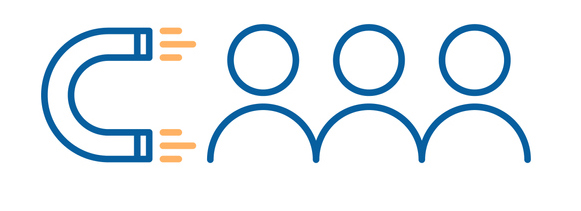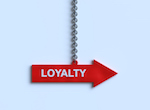Editor’s note: Kevin Gray is president of Cannon Gray, a marketing science and analytics consultancy. Koen Pauwels is distinguished professor of marketing at Northeastern University, Boston, and co-director if its digital, analytics, technology and automation initiative.
When it comes to brand loyalty and customer retention, there are various schools of thought – and marketing scholars and other experts often disagree about fundamental issues. At one extreme, the cost of new customer acquisition is stressed. In this view, loyalty is essential to brand survival. At the opposite end of this spectrum, loyalty is weak because brands in most categories are similar and substitutable. Here, it’s brand size that matters, and this means expanding a brand’s customer base.

When thinking about brand loyalty and customer retention, we should keep a few things in mind. Whether the industry is B2C or B2B is one consideration, as is the type of product or service and the frequency with which it is purchased or subscribed to. Other factors include who the shoppers, purchasers, decision makers and end users are. Typically, they are not the same individuals and, furthermore, shopping, purchasing and using are frequently collective activities, as is deciding what to buy.
Recency, frequency and monetary value are other things to bear in mind. Ever tried, have bought recently, buy most often and amount purchased are different variables. Each is important. For instance, some brands are bought in bulk or in large packs/containers when on sale but are not the purchaser’s favorite brand nor the one they buy most often. Volume-wise, however, they may be the "favorite."
There is also share of preference. The brand you like the most may not be the one you buy most often, owing to price or because it's not sold where you usually shop. We need to be clear and consistent in the way we define share.
Double jeopardy is often mentioned in these discussions. This is "an empirical law in marketing where, with few exceptions, the lower-market-share brands in a market have both far fewer buyers in a time period and also lower brand loyalty." Its implications for a specific industry, category and company will vary. In general marketers should aim to acquire new customers and increase the loyalty of existing customers (e.g., repeat purchase, purchase frequency), and do so as cost effectively as possible. This is generally easier said than done.
Loyalty
Given the way customer lifetime value is calculated, the profit importance of loyalty directly depends on three things:
- Acquisition and retention costs – the relative cost of keeping an existing customer versus finding a new one.
- Time to payback – does a customer yield high profit soon, as in auto repair, or slowly over time, as in banks?
- Word of mouth – to what extent do customers who leave spread negative word of mouth that increases acquisition costs or, conversely, to what extent do loyal customers spread positive word of mouth that reduces acquisition costs?
Increasing loyalty can be challenging, one reason being that many customers are already maxed out on a category and increasing the frequency or volume of their consumption is infeasible. Many frequent purchasers enjoy variety and want to use many brands, even at the same price. They would not do this if they felt the brands were all the same. (Note that variety seeking should be distinguished from deal shopping.)
Purchase cycles are another consideration; cars, refrigerators and other durables are expected to last for years. There are contractual agreements and subscriptions, too, for ISPs, telecoms and insurance, for instance.
New customer acquisition
On the other hand, new customer acquisition can be very expensive. There may be legal or regulatory matters to consider. In specialized businesses (e.g., marketing research) substantial client education and after service may be needed for new clients. Even in fast-moving consumer goods categories, new customer acquisition can be costly. For example, it may require an agreement with a supermarket or CVS chain that currently does not carry the brand. This cannot be accomplished overnight or without cost.
It should also be mentioned that not all brands should grow. Some are bloated and unprofitable and need to downsize.
Keeping an open mind: loyalty and retention
This has only been a snapshot of a very big topic, and we will only add that segmentations which do not meaningfully differentiate consumers with respect to brand preference, brand substitution patterns and similar variables will be rejected by most clients. We say this based on long experience conducting segmentation studies. One exception is when a product category is very new or does not yet exist in the country or area where the research was undertaken. How we think segmentations should be used and how they often are used in practice is a separate topic, also important.
Cliché thinking can be costly, as can assumptions. We recommend that you keep an open mind and research your brand and category.
